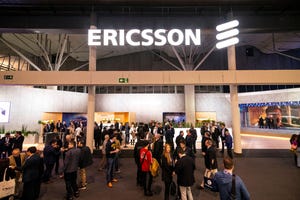Cable: FCC's AllVid Goes Too Far
NCTA says agency's idea for one-size-fits-all boxes and adapters is overly ambitious and obsolete from the start, and TiVo agrees

The Federal Communications Commission (FCC) AllVid idea ain't all that.
At least that appears to be the opinion of the cable industry as comments poured in this week in response to the FCC's Notice of Inquiry (NOI) on AllVid, a plan to spur competition and drive broadband adoption through standardized, cross-industry gateways and special adapters that can bridge managed TV services (cable, satellite, IPTV) with the wonders of the Web.
The AllVid NOI isn't a formal rulemaking activity at the FCC yet, but cable's primary lobbying arm and some of the industry's key suppliers stress that it's technically onerous and overly ambitious. (See FCC Floats 'Simple' Gateway, CableCARD Rules and All About the FCC's AllVid.)
The National Cable & Telecommunications Association (NCTA) , which is in favor of regulations that would apply to all service providers, said the NOI's anticipation of a "single standardized solution" won't work because it doesn't pay enough attention of the "critical end-to-end integration aspects of MVPD [multichannel video programming distributor] services," including the key technical or licensing characteristics and complexities that make up "modern interactive MVPD services."
The NCTA instead suggested the FCC shun a do-it-all approach in favor of AllVid "user interfaces" that would be linked to the specific MVPD services. Those interfaces, as the NCTA sees it, should include the video services themselves, along with the associated security, transactional, advertising, and promotional elements that do all the handshaking between the video device and the network.
The FCC wants the video device sector to enjoy the same level of competition that exists today in the the mobile device arena, but the NCTA thinks the AllVid NOI comes up short here, too. App developers, the NCTA pointed out, still must write separate applications to each mobile platform.
"The same is true in video. Each CE device may share some common features, such as a Linux operating system, but CE manufacturers do not build a common application platform," the agency argues, noting that Netflix Inc. (Nasdaq: NFLX), as one example, has to develop, test, and maintain separate versions of its Watch Instantly client for every TV, game console, and Blu-ray player it supports.
Arris Group Inc. (Nasdaq: ARRS), which claims to be making a CableCARD-based "AllVid-like" media gateway, called the FCC's goals for an AllVid adapter "laudable" but also "overly ambitious," and suggests the agency steer clear from mandating gateway architectures because innovation and consumer desires "change far too rapidly for the Commission to anticipate."
FCC "intervention is unnecessary and could slow innovation essential to expanding the market for retail video devices," said Arris, which got into the video set-top box market last year via its acquisition of Paul Allen's Digeo Inc. (See Arris Digs Digeo .)
TiVo Inc. (Nasdaq: TIVO), for a change, agreed with the NCTA's position on the point that it's not necessary to devise one AllVid device for all MVPDs. Instead, it thinks MVPDs should field their own gateways that support one or more retail products and draw a line between functions and features that can be included in those gateways and those that are "subject to competition in open-market client devices" that aren't included in those gateways.
"Each MVPD should control the design of the gateways to be used on its system, to the extent of the gateway’s interactions with the MVPD’s system," the vendor said.
Plenty of other comments, though, suggest that AllVid would be easy-peasy.
Intel Corp. (Nasdaq: INTC) is all for the idea, holding that it's feasible as long as it supports several "minimum functions," including conditional access, network security, tuning, support for a variety of video codecs and networking protocols, and IP connectivity.
Sony Corp. (NYSE: SNE) spelled out why it thinks the AllVid approach would succeed where CableCARD failed. Sony, which has released more than 30 CableCARD-compatible devices, believes the technological incompatibilities between cable systems and retail devices have added layers of unnecessary complexity.
"A lack of standardization across cable systems required massive investments by device manufacturers to ensure compatibility across providers, across systems operated by the same provider, and even among head-ends within a system."
Sony acknowledged that tru2way attempts to overcome these shortcomings, but characterized it as a cable-only, "partial solution" to the problem that limits the technology's market potential.
The FCC docket is still filling up with comments on the AllVid issue, but here's a sampling of what other parties are saying:
The American Cable Association (ACA) , which represents hundreds of independent MSOs, said it had no specific view on the AllVid concept, but remained concerned that it may require MVPDs to make substantive changes to their equipment and operations. The ACA did urge the Commission to "move cautiously" as it seeks a successor the CableCARD "and ensure that any new regulations do not disproportionately burden smaller operators."
Charter Communications Inc. highlighted what would be technically necessary for switched digital video (SDV) to work in the AllVid environment. The MSO said that all the SDV implementations would have to be ported to the interface, forcing retail devices to support a complex "predictable software client" that would be subject to operability testing. The approach outlined in the NOI "makes no provision for these requirements," Charter said.
Nagravision SA called on the FCC to ensure that there's "real competition between conditional access vendors," lamenting the Cisco Systems Inc. (Nasdaq: CSCO)/Motorola Inc. (NYSE: MOT) duopoly that exists now. Its offered remedy is Simulcrypt, a system that allows one or more security systems to operate simultaneously on the cable system.
"This approach successfully undermines 'vendor lock' by allowing multiple suppliers of set-top boxes or gateway devices to be able to partner with multiple suppliers (actual or potential) of network-compatible conditional access systems to address the needs of a particular system operator," the company said.
Save for the rare example (e.g. Cablevision Systems Corp. (NYSE: CVC)), Simulcrypt has generally been used outside the US. Some smaller US cable operators have shown a desire to use Simulcrypt domestically, but have complained that Moto and Cisco do little to support the technology in a market where they have already secured market share. (See Cisco, Moto Called Out by Ohio MSO.)Beyond Broadband Technology LLC (BBT) , a consortium backed by some Tier 2 and Tier 3 operators, agreed with other cable parties that the AllVid concept is a massive undertaking, and again, pushed the FCC to consider an open downloadable conditional access system. BBT, of course, is touting a platform it has developed that claims to be open to any conditional access or video security system. The platform relies on a secure microchip that costs about $5 per unit.
"The technology entailed in the chip is already under patent, or patents have been applied for. No additional IP [intellectual property] pools would be necessary," BBT said.Entropic Communications Inc. (Nasdaq: ENTR), a Multimedia over Coax Alliance (MoCA) founder and MoCA chipmaker, said the FCC should consider -- you guessed it! -- MoCA as an acceptable networking interface for AllVid, noting that multiple vendors already support the speedy tech and that it's being adopted by telcos, cable operators, and satellite TV service operators alike. (See MoCA Is Go for 2.0.)
— Jeff Baumgartner, Site Editor, Light Reading Cable
About the Author(s)
You May Also Like












